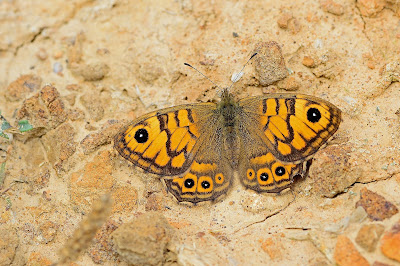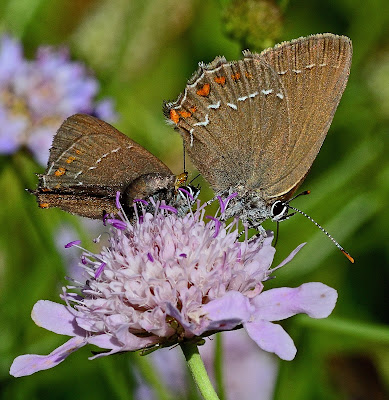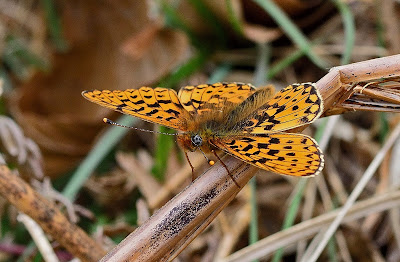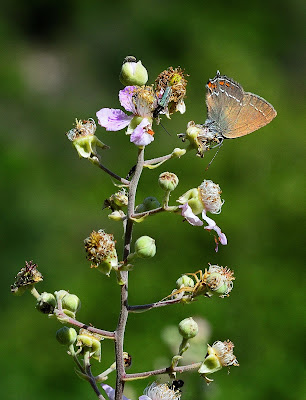The Aegean Meadow Brown Maniola telmessia, is found on the island of Rhodes and as similar species are not present it is safe to say that identification is certain. I was pleased to see quite a few of these this month (May) although I noted that there were a notable lack of female sightings. Perhaps the females were under cover before egg laying.
Monday 22 May 2023
Saturday 20 May 2023
A Small Brown Skipper.
Almost four years have passed since I last made a visit to the Greek Islands ,so a holiday to the island of Rhodes was much anticipated. There is still a burst of colour from flowering plants along the trackways and fields in May to tempt the butterflies. However despite being a rather small brown skipper I was pleased to encounter the Pygmy Skipper,Gegenes pumilio, by the side of a track as pictured below. Although a very fast moving butterfliy it was good enough the settle on this stone.
Sunday 11 September 2022
More Garden Visitors.
Although not as memorable as the species in my last post a good number of butterflies have visited my garden this summer, attracted mainly by our flowering Buddleia. Apart from the more common garden butterflies there have been visits on several occasions by the Dark Green Fritillary and more recently Wall Brown. In addition Painted Lady was first seen in the garden back in May and also today when this individual spent some time nectaring
.
Saturday 1 May 2021
More New Spring Sightings
The month of April was very dry with cold winds from the north and east and temperatures well below average for the time of year. However things are due to change as May begins with rain and wind in the forecast after the weekend. Hopefully warmer weather will soon be on the way. Today continued the April theme and when the sun shone it was very pleasant as I returned to the landslip. Descending the steps onto the landslip I at once saw a male Wall Brown on the cliff slope and that was quickly followed by two more. Unfortunately the sun then disappeared behind shower clouds and the only other species seen were a Dingy Skipper, Small Copper, and a Peacock.
Returning to the foot of Afton Down, it was pleasing to record the first Small Blue of the year with four individuals. Green Hairstreak were again present along with a very pristine male Common Blue.
Monday 18 May 2020
Back on the Landslip & Back to Nature.
Friday 14 September 2018
Late Summer Butterflies on the Landslip.

Monday 4 June 2018
A Pair of Hairstreaks.

 |
| Ilex HS with presumably the male on the left attempting to mate |
Monday 17 April 2017
Busy Orange Tips.
Wednesday 23 November 2016
Favourite Find of 2016.











































